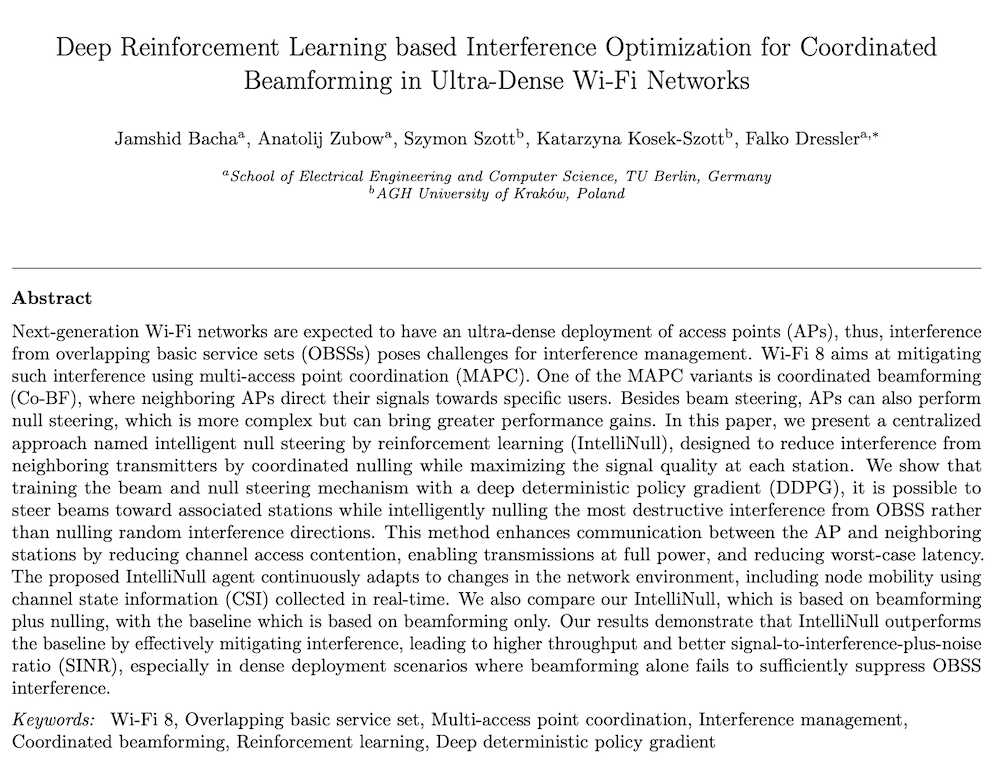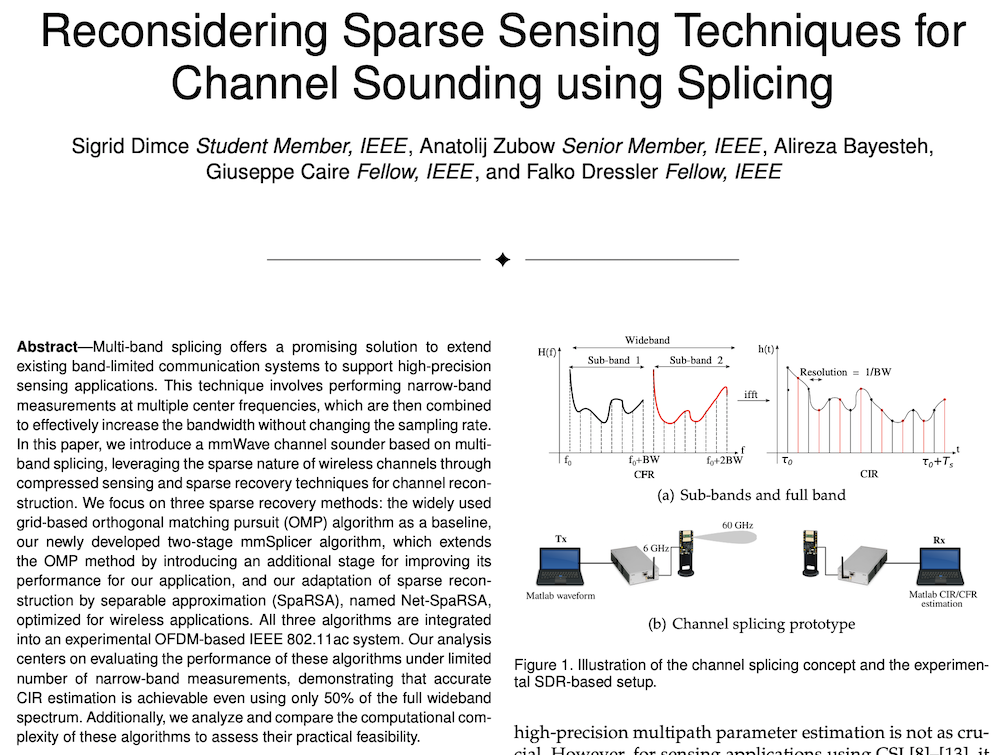Literature Database Entry
zubow2024plifi
Anatolij Zubow, Agon Memedi and Falko Dressler, "PLiFi : Analog Amplify and Forward Relaying in Cascaded PLC-LiFi Networks," Proceedings of IEEE Wireless Communications and Networking Conference (WCNC 2024), Dubai, United Arab Emirates, April 2024, pp. 1–6.
Abstract
LiFi has become an interesting and now more mature WiFi complement. To overcome the coverage limitations of LiFi and to create robustness against signal blockage, we use analog relays that cooperate with each other in both transmissions and signal reception. We present an ultra low-cost cascaded PLC-LiFi communication system comprising Power- line Communication (PLC) for backhauling and Light Fidelity (LiFi) for wireless access. The interworking between the two technologies is achieved through low-complexity analog Amplify-and-Forward Relaying (AFR), i.e., the luminaries act as simple media converter. Results reveal the impact of amplification of AFR on the SNR as well as the relationship between the PLC and the optical wireless link length. Moreover, even so the gain from cooperative communication is substantial it is limited due to noise propagation in AFR.
Quick access
Original Version ![]() (at publishers web site)
(at publishers web site)
Authors' Version ![]() (PDF on this web site)
(PDF on this web site)
BibTeX ![]()
Contact
Anatolij Zubow
Agon Memedi
Falko Dressler
BibTeX reference
@inproceedings{zubow2024plifi,
author = {Zubow, Anatolij and Memedi, Agon and Dressler, Falko},
doi = {10.1109/WCNC57260.2024.10571269},
title = {{PLiFi : Analog Amplify and Forward Relaying in Cascaded PLC-LiFi Networks}},
pages = {1--6},
publisher = {IEEE},
address = {Dubai, United Arab Emirates},
booktitle = {IEEE Wireless Communications and Networking Conference (WCNC 2024)},
month = {4},
year = {2024},
}
Copyright notice
Links to final or draft versions of papers are presented here to ensure timely dissemination of scholarly and technical work. Copyright and all rights therein are retained by authors or by other copyright holders. All persons copying this information are expected to adhere to the terms and constraints invoked by each author's copyright. In most cases, these works may not be reposted or distributed for commercial purposes without the explicit permission of the copyright holder.
The following applies to all papers listed above that have IEEE copyrights: Personal use of this material is permitted. However, permission to reprint/republish this material for advertising or promotional purposes or for creating new collective works for resale or redistribution to servers or lists, or to reuse any copyrighted component of this work in other works must be obtained from the IEEE.
The following applies to all papers listed above that are in submission to IEEE conference/workshop proceedings or journals: This work has been submitted to the IEEE for possible publication. Copyright may be transferred without notice, after which this version may no longer be accessible.
The following applies to all papers listed above that have ACM copyrights: ACM COPYRIGHT NOTICE. Permission to make digital or hard copies of part or all of this work for personal or classroom use is granted without fee provided that copies are not made or distributed for profit or commercial advantage and that copies bear this notice and the full citation on the first page. Copyrights for components of this work owned by others than ACM must be honored. Abstracting with credit is permitted. To copy otherwise, to republish, to post on servers, or to redistribute to lists, requires prior specific permission and/or a fee. Request permissions from Publications Dept., ACM, Inc., fax +1 (212) 869-0481, or permissions@acm.org.
The following applies to all SpringerLink papers listed above that have Springer Science+Business Media copyrights: The original publication is available at www.springerlink.com.
This page was automatically generated using BibDB and bib2web.





